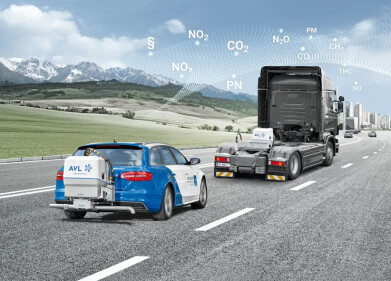Air Monitoring
Are Biogenic Carbons Damaging?
Oct 16 2021
The phrase “biogenic carbons” refers to those carbons which are absorbed, stored and then later emitted by organic matter such as grasses, plants and trees. Soil is another source of biogenic carbon that is responsible for sequestering much of the CO2 in our environment.
At the end of their life cycles, these organisms release the carbon they have stored up in their leaves, stems and roots throughout their lives back into the atmosphere. However, the organic matter which springs up to replace them after their death should, theoretically, absorb the same amount of carbon that they emit. So why, then, are biogenic carbons labelled as damaging by certain sections of the scientific community?
The case for biogenic carbons
When fossil fuels are extracted from deep beneath Earth’s surface and combusted to generate electricity in power stations around the world, they release substantial amounts of carbon in a short space of time. While that unfortunate by-product of the process has been tolerated until now due to the incredible convenience and immense energy potential which oil, coal and gas hold, the world is now realising that such a model is unsustainable.
That’s because it takes millions of years and intense climatic pressures for those substances to form. Biogenic carbon feedstocks, on the other hand, can be replenished within just a fraction of the time. As such, their proponents claim they are virtually carbon-neutral, since any carbon they emit will be absorbed by the organic matter which is cultivated in their place.
The case against biogenic carbons
However, it must be remembered that such an arrangement only makes environmental sense if the feedstocks are indeed replaced after being harvested and combusted. This is not always the case; in parts of the world where land is being cleared at an alarming rate to make way for agricultural and industrial projects, biogenic carbons are actually a blight on the ecosystem. Biogenic CO2 derived from deforestation efforts, for example, upsets the harmony of the biogenic carbon cycle, as well as contributing to poor air quality and destroying animal habitats.
What’s more, there’s also a school of thought that says that even biogenic carbons whose feedstock is replaced are not carbon neutral in real terms. This is because although the emissions will be offset by carbon sequestered by their replacements in the long run, such a process could take up to 100 years to occur. In a world where climate change dictates that we need immediate solutions to urgent problems, the apparent silver bullet of biogenic carbons could do more harm than good.
The verdict
While there is certainly some value in the argument that irresponsible management of biogenic feedstocks can be hugely damaging to the natural ecosystem, it’s also true that biogenic carbon does have unignorable benefits over fossil fuels. No one should expect the latter to be replaced by the former entirely, but when combined with other clean sources of power such as wind, solar and wave, biogenic carbon can help create a more sustainable energy profile for the future.
Having said that, the above introduction to the darker side of biogenic carbons is merely that: an introduction. For those who wish to delve deeper, the article Biogenic Carbon: Definition, Emissions, Storage & Measurement takes a more in-depth and nuanced approach to the subject.
Digital Edition
IET 34.2 March 2024
April 2024
Gas Detection - Biogas batch fermentation system for laboratory use with automatic gas analysis in real time Water/Wastewater - Upcycling sensors for sustainable nature management - Prist...
View all digital editions
Events
Apr 30 2024 Melbourne, Australia
Apr 30 2024 Birmingham, UK
May 03 2024 Seoul, South Korea
May 05 2024 Seville, Spain
May 06 2024 Minneapolis, MN, USA


















